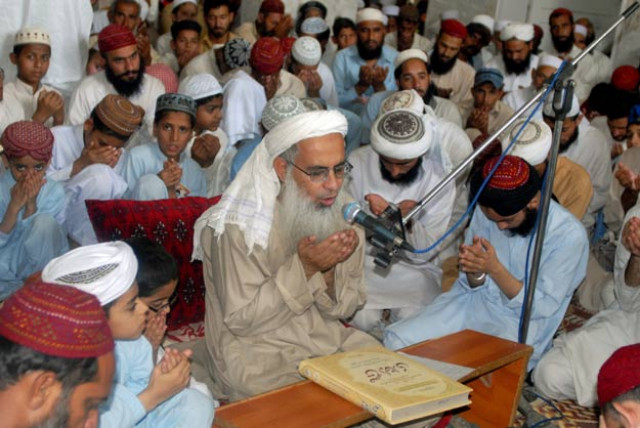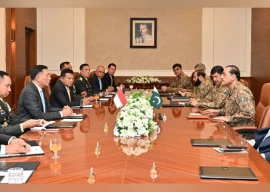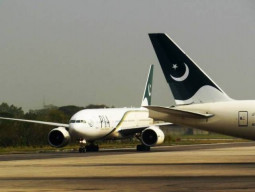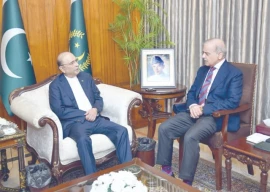
It is indeed odd that a government whose prime minister recently claimed to be personally liberal would then turn a blind eye to someone creating anxiety in the heart of the capital. This is not just about protection of the capital or the diplomats who live here, but also sending a message around the world that the state is unwilling to discipline a group or an individual who created such chaos in 2007 and probably has the capacity to incite people into bloody action against the rest of society.
But Aziz is an old mystery, not a new one. In fact, there is a history of the state turning a blind eye towards him and his family despite reports about their action or involvement in activities punishable under different provisions of the Pakistan Penal Code. From 2001 up until July 2007, 39 FIRs were filed against Lal Masjid’s management and students. Out of these, the initial four reports were filed in 2001, followed by two in 2004, three in 2005 and the remaining in 2007. From illegal possession of weapons and the unlawful use of loudspeakers to the illegal intimidation of people, kidnapping, wrongful confinement, harbouring of offenders and homicide or attempted homicide, the state had sufficient reasons to proceed against the Lal Masjid brigade. However, no decisive action was ever taken except for the 2007 military operation that may have been initiated to placate the Chinese or the Americans.
The accused were acquitted in the four cases filed in 2001, declared proclaimed offenders in another four cases of 2004 and 2005, and investigations were carried out in all other cases that were of a more serious nature. In none of the cases did the state try to bring decisive evidence against the culprits. Strangely, the Lal Masjid brigade was not even punished for the loss of life of around seven military officials.
For those surprised by the civilian government’s lack of action, it is a fact that no one has ever seriously brought the Lal Masjid brigade to book. In fact, a couple of senior police officials, who tried to take some strict action in 2007, were removed from their positions. (As a footnote I would like to add that a similar thing happened in Bahawalpur in 2002, when the Jaish-e-Mohammad besieged the town hall and the local administration, and threatened that rivers of blood would flow. The police officer responsible for taking action against the group was eventually removed.) Mind you, this protection was provided under a military government, which also earned kudos from around the world for firmly responding to a threatening situation in Islamabad. Many years later, a lot of people think of General (retd) Musharraf as a ‘liberal’ because he ordered the military operation against Aziz and his men and women. Did he really intend to take any action? And was he alone in his fight against the Lal Masjid or did all of his men back him in the operation? The Lal Masjid clan continued to operate freely even when the police discovered intimate conversations between the female leadership of the mosque and people involved in, for example, the killing of a Polish engineer.
Apparently, post-2007, Aziz was kept on a tight leash and looked after by some influential contacts of the state. The mosque was rebuilt and Aziz was rehabilitated in it despite the Ghazi force — which grew out of the 2007 incident — being responsible for several acts of terrorism, even within the capital city. The approximately 30 madrassas in Islamabad linked to Aziz were also provided for and he was often facilitated in giving help to his people back home in Rajanpur.
And at no point did Aziz demonstrate that he was not a rational actor. He chose to escape during the 2007 operation clad in a burqa, indicating his flexibility, which means that he is not the kind who would sacrifice his life for his ideology. He did not even object to dealing with a female business and marketing executive, who was made responsible for overseeing the rebuilding of the mosque. This was not a burqa-clad female, but a modern person with moderate beliefs who was just performing a task assigned to her. According to some sources, his recent anxiety about implementation of sharia in the country was probably linked with the personal issue of rescuing a family member rather than anything else.
Aziz will probably continue living in the capital city. He is a beneficiary of some secret decision — not to take action against him — at some critical levels of the state. He is extremely beneficial in keeping the state engaged with both the right and the centre (I am assuming that there is no real left present to engage with). Those who follow him or consider themselves devout feel that Aziz’s continued presence means that the state has not undergone any drastic ideological shift. On the other hand, his presence keeps the centrists, which include those who consider themselves to be left wing, busy and excited. Every now and then, there will be commotion on the streets or in the social media, indicating resolve to remove the cleric. But this gentle and manageable friction reflects Islamabad’s version of moderation. The real threat to the powerful and to the establishment can only really come from a potent socioeconomic narrative, which is still missing. Aziz will certainly not stand for the disempowered. After all, he is a project of capitalism and will continue to thrive.
Published in The Express Tribune, January 10th, 2016.
Like Opinion & Editorial on Facebook, follow @ETOpEd on Twitter to receive all updates on all our daily pieces.














COMMENTS
Comments are moderated and generally will be posted if they are on-topic and not abusive.
For more information, please see our Comments FAQ